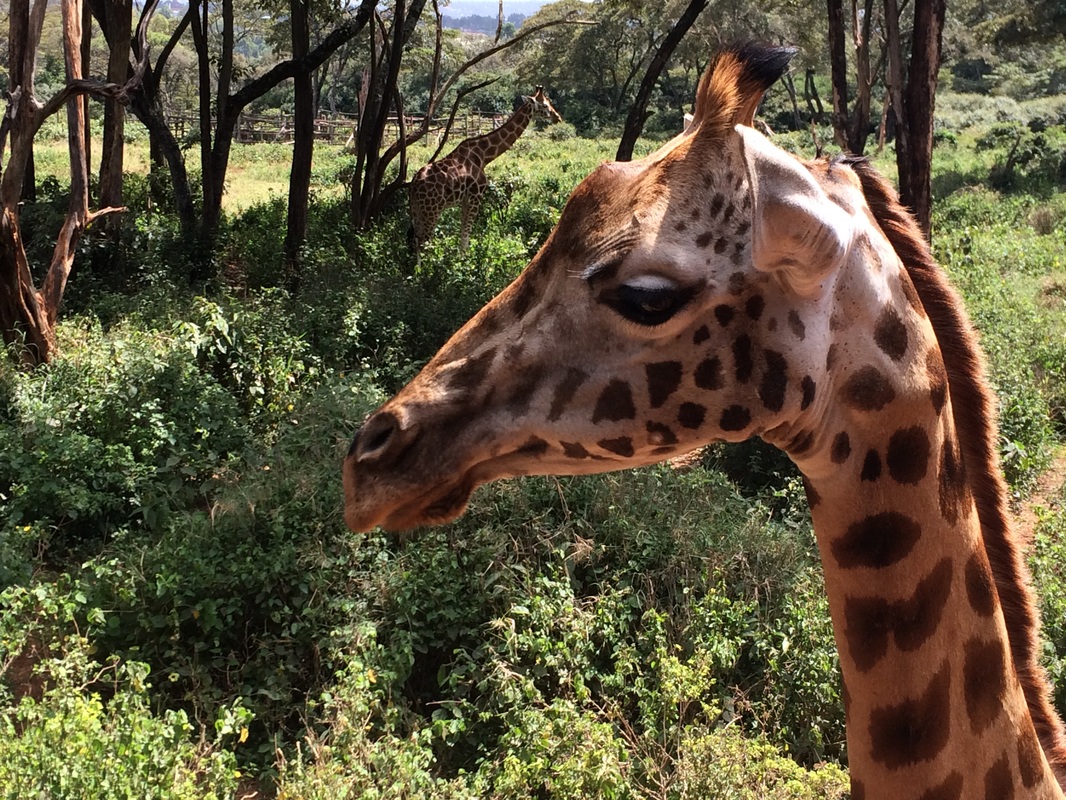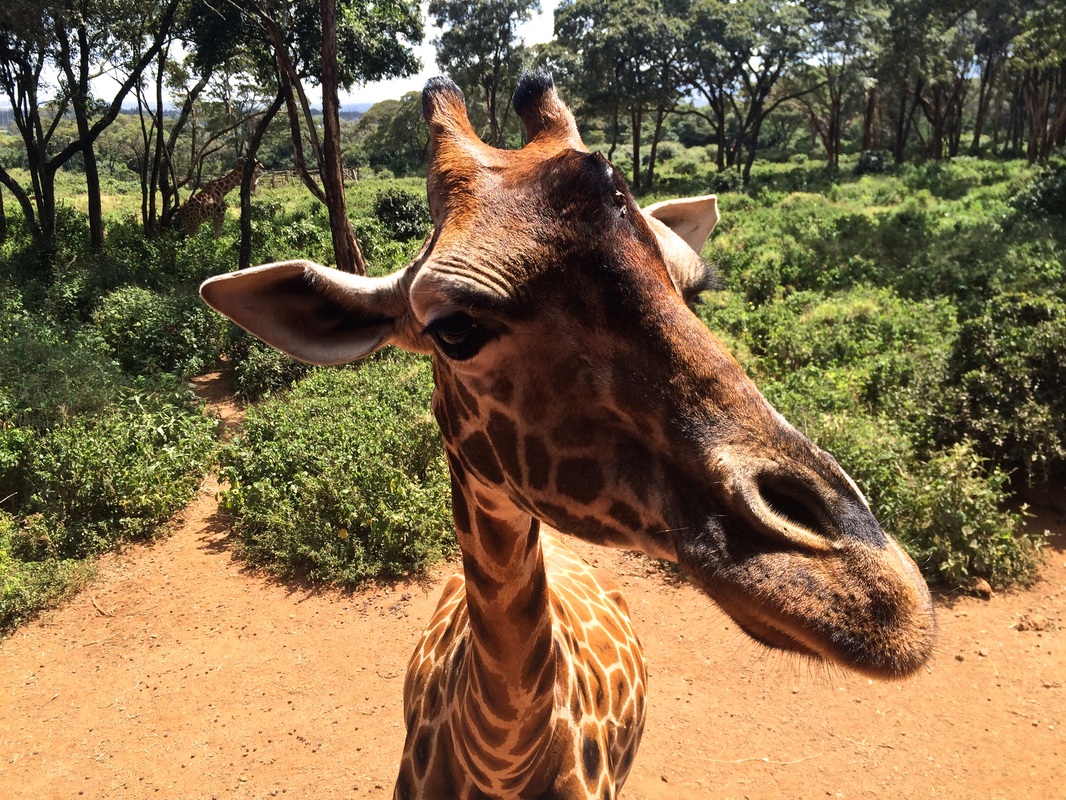|
Popping over to say "hello." Did you know that a herd of giraffes is called a tower? Did you know that giraffe leg bones contain no marrow and are so dense that a single blow can send an adult lion flying? Did you know that giraffes sleep with their heads aloft because, like cows, they need to send their food up and down that enormous esophagus multiple times to digest? Did you know that there are actually three subspecies of giraffes in Kenya, that they can avoid drinking for days, that they when they give birth, the infant plummets more than two meters to the ground? Oh, hey. Prior to my visit to the Giraffe Centre in Karen, Nairobi I knew next to nothing about these unwieldy giants, other than the fact that they looked like the mammalian answer to sauropods. I thought they resembled a cruel trick of evolution, an awkward, Bambi-eyed creature lumbering across the savannah on stilts. Double trouble. I also learned that, as far as locals are concerned, they’re about as interesting as squirrels or coyotes might be to a North American. On safaris, people seek out nimble cheetahs, sleek leopards or increasingly rare rhinos for bragging rights. Spotting a giraffe is hardly worth noting. Yet when I spied them in Masai Mara last year, I was smitten. An adult male can weigh up to 1,600 kilograms and needs to eat almost constantly to meet its nutritional needs. So even though a safari wasn’t in the cards during my return trip to Kenya this year, I wanted to squeeze in another look. My hosts gamely drove with me down dusty back roads, stopping to ask nuns and motorbike taxi drivers for directions, until we arrived at the rather poorly marked entrance to this unique conservation center. It was established in 1979 by Jock and Betty Leslie Melvile as a breeding ground for Rothschild’s Giraffes, a subspecies on the brink of extinction due to habitat loss. Unlike more common Masai and Reticulated giraffes, Rothschild’s giraffes have no markings on their long, powerful legs. While most zoos pack as many animals into an enclosure as possible, the Giraffe Centre hosts only around 10 occupants at a time in order to give them plenty of space and food. As they age, many are carefully introduced into the wild in order to bolster existing breeding populations. Those enormous purple tongues. Aside from an entertaining presentation, the highlight of the visit for small children (okay, and me) is feeding these cumbersome creatures. Daring visitors are encouraged to put a food pellet on their lips and receive a “kiss” from the giraffe’s long, purple tongue. Although giraffe saliva is antiseptic (in order to prevent infection while munching on thorny acacia trees), I couldn’t quite bring myself to do it. The warthogs are technically uninvited guests, but nobody seems to mind. If hanging around these gangly giants and the warthogs that burrow into the sanctuary in search of free food isn’t enough, you could always book a stay at the adjacent Giraffe Manor. At this unusual boutique hotel, the boundary between the human guests and wilder inhabitants is all but nonexistent. The more brazen giraffes have even been known to poke their noses through the windows during breakfast. Okay, last one, I swear.
2 Comments
|







 RSS Feed
RSS Feed